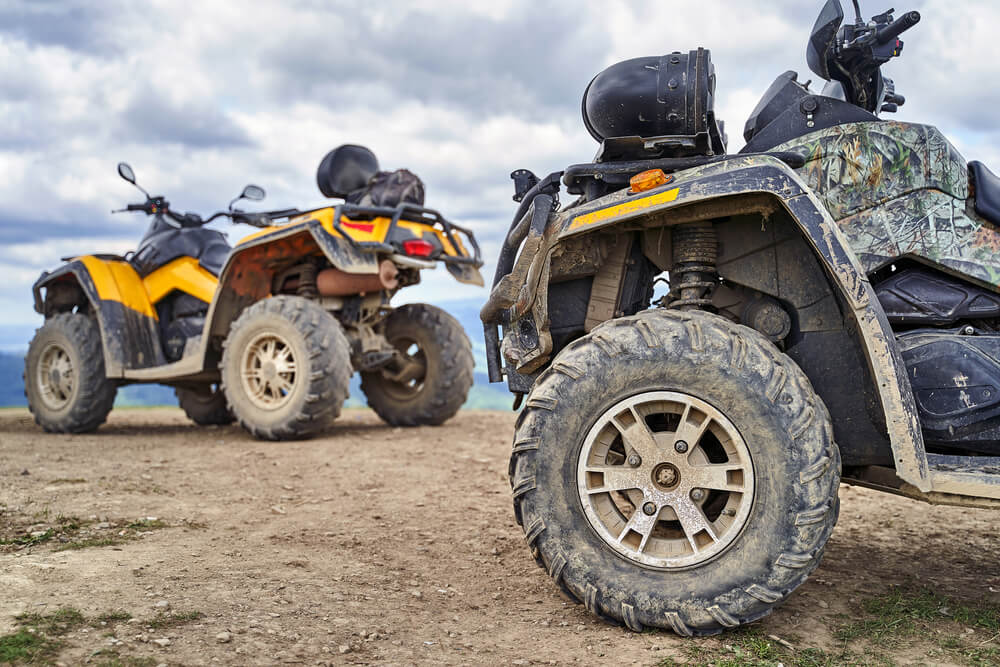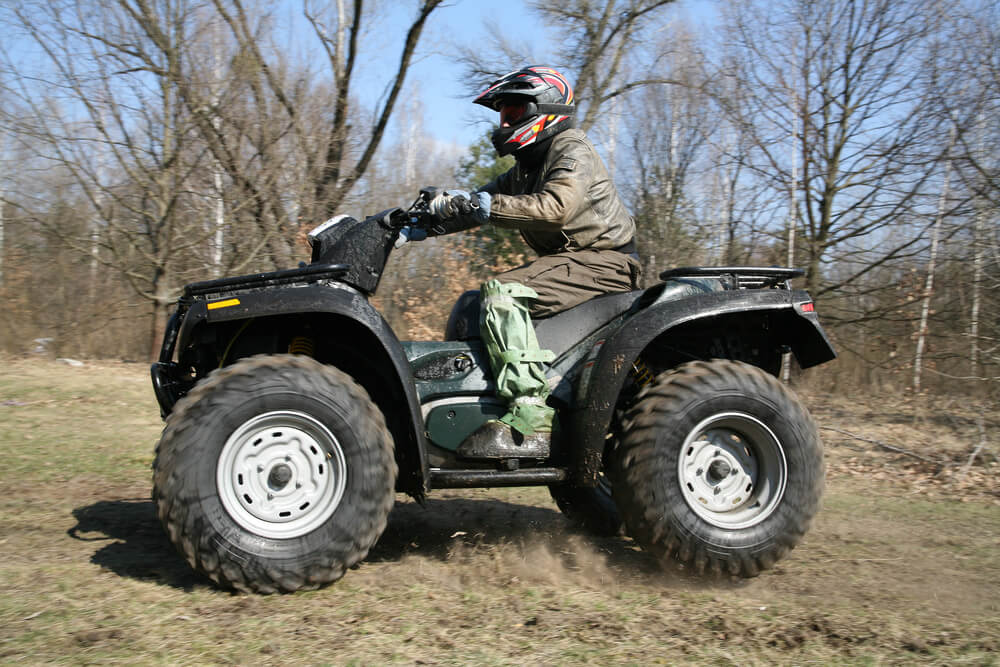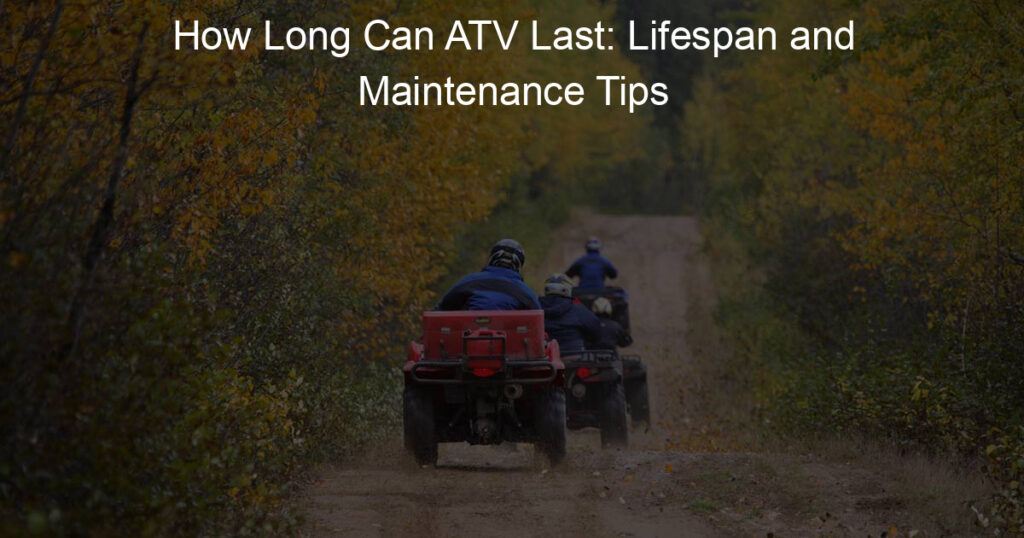All-terrain vehicles (ATVs) are popular among outdoor enthusiasts and off-road riders. They offer a versatile and fun way to explore various terrains and are designed for durability.
How long can ATV last? The lifespan of an ATV depends on several factors, including maintenance, usage, and riding conditions. On average, an ATV can last around 10,000 hours or even more with proper care and attention.
A well-maintained ATV can provide many years of reliable service, with some ATVs lasting up to 20 years. However, it is important to take into consideration various factors, such as how frequently you ride, the environment, and your riding style.
By understanding these factors, you can better gauge your ATV’s potential lifespan and take steps to prolong it.
Key Takeaways
- The average ATV lifespan is around 10,000 hours, with some lasting up to 20 years with proper care.
- Factors affecting ATV lifespan include maintenance, usage, and riding conditions.
- Proper maintenance and riding techniques can significantly increase your ATV’s longevity.
How Long Can ATV Last

There are several factors that can affect the longevity of an ATV. By understanding each, you can ensure the longest possible lifespan for your vehicle.
Usage
The frequency of your ATV usage plays a significant role in its lifespan. Riding your ATV daily or for long hours can lead to wear and tear much quicker than occasional rides.
However, keeping it idle for prolonged periods isn’t ideal either, as it can cause mechanical issues. It’s important to maintain a balance between usage and rest to keep your ATV in optimal condition.
Maintenance
Regular maintenance is essential for keeping your ATV in good working condition. By following the manufacturer’s recommended service schedule, you can prevent common issues and extend the life of your ATV.
Some important factors for proper maintenance include:
- Changing engine oil and filter regularly
- Inspecting and replacing air filters as needed
- Keeping brakes, axles, and bearings well-lubricated
- Ensuring tires are correctly inflated and in good condition
Terrain
The terrain you ride on can have a significant impact on your ATV’s lifespan. Riding on rough, rocky, or extremely muddy terrain can cause more strain on your vehicle, leading to faster wear and tear.
To prolong the life of your ATV, it is advisable to ride on smoother, well-maintained trails when possible and adapt your riding style to reduce strain on the vehicle when tackling rougher terrain.
Model and Brand
Finally, the model and brand of your ATV can influence its overall lifespan. Some brands are known for their durability and top-quality components, while others may have a history of mechanical or structural issues.
Researching and selecting a reliable and reputable ATV brand can contribute to a longer-lasting ATV.
By paying close attention to these factors, you can improve the longevity of your ATV and enjoy many years of adventure and excitement on the trails.
The Importance of Regular Maintenance

Regular maintenance is essential to ensure the longevity and optimal performance of your ATV. By staying consistent with your maintenance schedule, you can prevent costly and time-consuming repairs.
This section will cover three critical maintenance tasks—oil changes, tire checks, and brake checks—that play a crucial role in extending your ATV’s lifespan.
Oil Changes
Regular oil changes are vital for maintaining the health of your ATV’s engine. Fresh oil lubricates moving parts, ensuring smooth operation and preventing excessive wear. It also helps to keep the engine clean by removing dirt and debris.
Typically, it’s recommended to change the oil every 100 hours of operation or around 1,000 miles but always refer to your ATV’s owner’s manual for manufacturer-specific guidelines.
Tire Checks
Regularly monitoring your tire pressure and condition is essential for both your safety and the performance of your ATV. Ensuring proper tire pressure will help maintain optimal traction, reduce wear on the tires, and improve fuel efficiency.
It is recommended to check your tire pressure before every ride to ensure optimal performance and extend the lifespan of the tires.
In addition to tire pressure, it’s also important to inspect the treads and overall condition of your tires. Watch out for irregular wear, cracks, punctures, or other visible signs of damage.
If you notice any issues, consult a professional to address the tire’s condition.
Brake Checks
Properly functioning brakes are crucial for your safety while riding an ATV. Regularly inspecting your brake pads, rotors, and fluid levels will help maintain optimal stopping power and prevent potential accidents.
Check your brake pads for wear, and replace them when they become too thin; ATV brake pads typically need replacing every 1,000 miles or so, depending on your usage patterns and riding conditions.
Moreover, ensure that your brake fluid levels are within the recommended limits and top off as needed. Lastly, check your brake rotors for signs of wear or damage and address any issues accordingly.
Remember, a well-maintained braking system will keep you safe and enable you to enjoy your ATV for many years to come.
Employing Proper Riding Techniques

By employing proper riding techniques, you can extend the lifespan of your ATV and ensure its optimal performance. One of the fundamental steps is familiarizing yourself with the ATV and its controls.
Make sure you thoroughly read the owner’s manual and understand the various features and safety precautions.
When you’re riding your ATV, it’s crucial to maintain a correct posture to prevent unnecessary wear on the vehicle and reduce the risk of accidents. Always keep your hands on the handlebars, knees in toward the gas tank, feet on the footrests, toes pointing straight ahead, and back straight but not tense.
This will help you control the ATV better and avoid putting excessive strain on its components.
Another essential technique for improving your ATV’s longevity is practicing smooth and controlled operation. Avoid making abrupt stops, sharp turns, or accelerating suddenly, as these can cause stress on the engine, transmission, and suspension parts.
When turning, lean your upper body into the turn and keep most of your body weight on the outside foot peg. This allows for better balance and even distribution of forces on the vehicle.
Proper braking is also vital for your ATV’s lifespan and overall safety. Always use both the front and rear brakes together, applying them smoothly and progressively. Refrain from locking the brakes, as this can cause skidding and potential damage to the tires and other components.
Lastly, never operate your ATV on public roads or paved surfaces, as they’re not designed for such use. Riding on these surfaces can lead to uneven tire wear, increased transmission and engine stress, and compromised safety due to reduced visibility and risk of collisions with other vehicles.
Following these proper riding techniques and adhering to routine maintenance can significantly extend the lifespan of your ATV and enjoy your off-road adventures.
Longevity Comparisons: ATVs vs Other Off-Road Vehicles

When considering the lifespan of ATVs, it’s important to compare them with other off-road vehicles. On average, an ATV can last around 10,000 miles if properly maintained and cared for.
Nevertheless, the longevity of an ATV ultimately depends on factors such as usage, maintenance, and terrain.
ATVs vs UTVs (Side-by-Side Vehicles): Both ATVs and UTVs are designed to handle off-road conditions, but they have some key differences. ATVs are generally smaller and more agile, making them suitable for navigating tight turns and dense areas.
On the other hand, UTVs are larger, have more seating capacity, and are often equipped with better suspension systems. Due to their larger size and more complex components, UTVs may require more frequent maintenance, which could affect their lifespan.
Yet, when properly maintained, UTVs can also last for several years.
ATVs vs Dirt Bikes: Dirt bikes are lighter and more maneuverable than ATVs, making them ideal for handling challenging terrains at high speeds. However, due to their high-revving engines, dirt bikes may require more frequent maintenance.
The life expectancy of a dirt bike can vary greatly depending on usage and maintenance, but it’s generally considered lower than that of an ATV.
ATVs vs 4×4 Trucks: 4×4 trucks are built for off-road adventures and typically come with powerful engines, high ground clearance, and robust suspension systems. These vehicles are designed to withstand rough terrains, but their heavy use can lead to wear and tear on components.
Depending on maintenance and usage, 4×4 trucks can last for many years, often outlasting ATVs. Nonetheless, the cost of maintaining a 4×4 truck will generally be higher than that of an ATV.
To ensure your ATV has a long life, it’s essential to follow the manufacturer’s recommended maintenance schedule and address any issues promptly. If you use your ATV for more than just recreational use, such as farming or utility work, it’s important to understand that the wear and tear on your vehicle may reduce its longevity.
By knowing the differences between off-road vehicles and using this information to tailor your maintenance routine, you can keep your ATV running well for years to come.
Ways to Increase Your ATV’s Lifespan

To keep your ATV in the best possible condition and ensure a long lifespan, there are several important maintenance practices you should follow.
In this section, we will discuss proper storage, avoiding overloading, and conducting regular checks on your vehicle.
Proper Storage
One crucial factor that can impact your ATV’s lifespan is how you store it. Ideally, you should store your ATV in a dry, cool, and well-ventilated area, away from direct sunlight and harsh weather conditions. This helps prevent rust and corrosion and keeps the tires in good shape.
If possible, invest in a high-quality cover specifically designed for ATVs, as it will provide additional protection from dust, debris, and moisture.
Avoid Overloading
Another important aspect to consider is not overloading your ATV. Stay within the manufacturer’s recommended weight limits to prevent stress and damage to the vehicle’s suspension, tires, and other components.
Doing so not only ensures the safety of you and your passengers but also helps maintain the overall condition and performance of your ATV.
Regular Checks
Performing routine checks on your ATV is essential for maintaining its lifespan. Some key areas to focus on include:
- Fluid levels: Make sure to regularly check and replace the engine oil, coolant, and brake fluid, following the manufacturer’s guidelines to ensure optimum performance and protection of your vehicle’s components.
- Air filter maintenance: Cleaning or replacing the air filter routinely will prevent dirt and debris from entering the engine and causing potential damage. Consult your ATV’s user manual for specific instructions related to air filter maintenance.
- Tire pressure: Inspect the air pressure in your tires frequently and adjust it according to the manufacturer’s recommendations. Proper tire pressure not only helps your ATV run smoothly and efficiently but also reduces the risk of tire-related accidents.
Remember, investing time and effort in the upkeep of your ATV can significantly increase its lifespan and provide you with a more enjoyable and safer riding experience.
Conclusion
In summary, the lifespan of an ATV largely depends on factors such as how often you ride, the type of terrain you ride on, and the level of care and maintenance you provide. On average, an ATV can last around 10,000 hours before needing major repairs or replacement parts.
With proper maintenance and care, some ATVs can even reach 20,000 hours or more.
To ensure your ATV lasts as long as possible, perform regular maintenance and always adhere to the manufacturer’s guidelines for service intervals and part replacements.
By doing so, you will not only extend the life of your ATV but also maintain its optimal performance and prevent potential breakdowns and costly repairs.
Remember that the terrain you ride on can also impact the longevity of your ATV. Riding on rough or challenging surfaces may require more frequent maintenance and repairs compared to riding on more even and predictable surfaces.
Be mindful of the conditions and adapt your maintenance routine accordingly.
As a responsible ATV owner, it is in your best interest to do everything you can to ensure your ATV remains reliable and functioning well for years to come.
By taking proper care of your ATV, you will undoubtedly maximize its lifespan, enabling you to continue enjoying the excitement and adventure of the off-road experience.
Frequently Asked Questions
How many hours is considered high for an ATV?
It’s not easy to pinpoint an exact number of hours that is considered high for an ATV, as it depends on various factors like the quality of the ATV, maintenance, and usage conditions. However, 1000-2000 hours is generally acceptable for a well-reputed ATV brand.
Keep in mind that with proper care, some ATVs may last much longer.
What is the average lifespan of a UTV?
The average lifespan of a UTV (Utility Task Vehicle) can vary based on factors like brand, build quality, and maintenance. Although it’s difficult to give a concrete number, a well-maintained UTV may last for about 20 years, similar to ATVs.
Staying up-to-date with the manufacturer’s recommended maintenance schedule can help extend your UTV’s lifespan.
How often should ATVs be maintained?
To keep your ATV running smoothly, it’s essential to follow the manufacturer’s recommended maintenance schedule. Regular maintenance tasks may include changing the engine oil and filter, checking and cleaning the air filter, lubricating the chain, adjusting the brakes, and inspecting the tires.
Keeping up with these tasks will help increase the longevity of your ATV and optimize its performance.
How long do ATV tires typically last?
The lifespan of ATV tires depends on riding conditions, terrain, and the quality of the tires. On average, well-maintained ATV tires can last between 2 to 4 years before needing replacement. Frequent off-roading on rough terrain or hard surfaces can wear down the tires faster. Regularly checking the tire pressure and inspecting for damages or wear can help ensure your tires last as long as possible.
What is the longevity of Polaris 4-wheelers?
Polaris 4-wheelers could have good longevity, possibly around 10,000 hours, assuming they receive proper maintenance and care. Taking care of the essential maintenance tasks and avoiding misuse will help a Polaris 4-wheeler last longer and perform better.
How long can an ATV remain unused?
If you plan on leaving your ATV unused for a long period, it’s crucial to prepare it properly for storage. With the right storage and care, your ATV can remain unused for several months or even a year.
This includes steps like cleaning and drying the ATV, adding a fuel stabilizer, charging the battery or disconnecting it, and storing it in a cool, dry space.
Properly preparing your ATV for storage will help protect it from damage while unused and make it easier to get running again when you need it.














